
Review on 🛠️ Enhanced 3M Leather and Vinyl Repair Kit for Ultimate Restoration - 08579 by Robert Ducki

SIMPLE BUT NOT EASY: Practice Makes Luck
A flathead screwdriver in my back pocket ripped open a gray leather car seat as I sat down. Listen to your mother when she speaks, don't put your tools in your back pocket. I practiced this repair on an old leather stool with a few long tears. Was very satisfied. My leather car seat repair was very good and better than a tear. It's not perfect, but it's a repair kit, not a magic kit, and the results have been very good. Practice brings luck. MY EXPERIENCE AND RESULTS: ADVICE FROM MY EXPERIENCE: The Secret Repair Compound hardens when heated. It will not properly cure without significant heat. If left outside, it will also begin to harden. After 24 hours, it will begin to turn into a sticky, lumpy, lumpy mass, so do not leave the mixture in the open air. The composition is not a paint or 'color' - it is a thermoset 'polymer'. It was the consistency of really thick honey from a jar. It's very susceptible to tension, so be careful not to get the threads of the mixture on a good portion of the part being repaired. Uncured mass can be removed with a paper towel. I suspect that if left long enough the wet mass will stain permanently due to the paint, so be careful. If there are voids/pits or crevices after the initial repair, you can add more compound and heat directly onto the hardened compound. HEATING DISK: The heating disc retains heat but cools down quickly when used outdoors with a breeze. . If you wait too long to apply the heating disk, the disk will cool to the point where it is no longer hot enough to cure the bond. So place a heat source near the repair site. Photos and certificates of unsuccessful repairs clearly showed that the material had not been sufficiently heated by the thermal pane. Hair dryer is not enough! The joint requires some concentrated heat to cure. I've heated the disc several times before removing the grainy paper and have had great results. MIXING THE COLORS: The hardest part. I put a piece of clear tape on a good chunk of my repair item. I then applied my mixed colors to the clear tape to see if the colors matched. Both repairs I did (light gray and dark brown) ended up with a pretty similar color. GRAIN: To get the correct grit, the grit paper must be LIGHTLY PRESSED into the WET mixture before applying heat. If the disc is too hot when placed on vinyl, it will flatten the vinyl grain of your item and look smooth. Practice with small patches of wet compound on the included vinyl pattern! MIXING THE REPAIR CLUTCH: I mixed the repair compound on a paper plate. The paper plate provided a nice surface for me to mix different shades (different shades) of paint onto. I could easily set aside a small amount and lighten or darken it or tint it with other colors. I might then attach a few options with clear tape over the good part to see how well they go together. DISC HEAT applied heat to the disc and then placed the hot disc on the grit paper, moving the disc constantly over the area to be repaired for about a minute. I got my best results by applying heat a few times, letting the paper cool, and then removing the paper. Use light, moderate pressure to get a nice feathered edge around the joint. Too much pressure and you will crush the material after the repair. Too little pressure and too much heat and you end up with a piece of cured material with no grit: not too hot, not too light, not too heavy: PRACTICE A FEW TIMES TO GET HEAT AND PRESSURE. I used a propane lamp for heating. Disc. I've had the best results by heating the disc a few times, maybe 5 seconds each, spreading the heat 10 seconds in between before placing it on the grit cloth (on the first try the disc was too hot and has burned the grain paper). and material cured into a lump). To measure the heat, I used a clean paper plate with my heat sensitive thumb underneath and quickly pressed the disc against the paper plate over my thumb. If the disc is too hot, it can burn your thumb and paper plates/grain paper. If the paper plate turns brown, it's too hot: wait a few seconds and reattach, then insert for repair. Too hot and you'll flatten the vinyl grain. Not hot enough and the mixture will be sticky. If the heat wasn't enough, simply apply heat again. Practice on a pattern! On a torn brown leather stool, the ends of the torn leather curled up and didn't lay perfectly flat. There were cavities after my first heating session. I reapplied the wet compound to the cavities and reapplied the heating pad. I had to fill the voids in the hardened mass several times because I couldn't even out the skin. It worked like a charm, you don't realize I've put it on multiple times. The repair stuck very well (I didn't use glue to fill in the gaps). SHINE: If the finished, fully cured repair is too shiny, use an eraser to reduce the shine. If it's not shiny enough, apply a small amount of wax paste or clear shoe polish and a buffing pad. Practice on a sample and you will see exactly what I have described and you will be able to make a real repair. I would highly recommend this set to my noisy friends with pocket tools. Much luck….
- Leather and Vinyl Repair Kit
- The Secret
New products
Comments (0)
Top products in 🧼 Car Interior Care
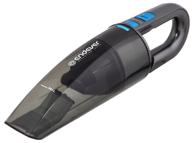
Car vacuum cleaner ENDEVER VC-291, gray

22 Review
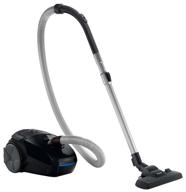
Philips FC8294 PowerGo Vacuum Cleaner Deep Black

19 Review
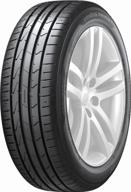
Hankook Tire Ventus Prime3 K125 205/55 R16 91H summer

56 Review
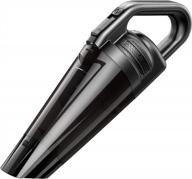
LIBERRWAY DC 12V Portable Car Vacuum Cleaner, High Power Handheld Wet Dry Auto Vacuum With 5.0Kpa Suction, Black

44 Review
Another interesting products
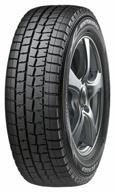
Dunlop Winter Maxx WM01 275/35 R21 99T

28 Review
![gaming chair cougar armor one, on wheels, eco leather, black/orange [cu-armone] logo](https://images.revain.org/blob/0_e9f57f9a70@128x128.jpeg)
Gaming chair COUGAR Armor One, on wheels, eco leather, black/orange [cu-armone]

53 Review
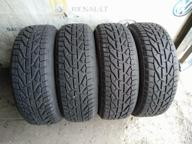
Kormoran Snow 215/55 R18 99 winter

32 Review
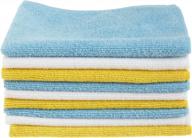
144-Pack Microfiber Cleaning Cloths - Non-Abrasive, Reusable & Washable (12X16In) | Amazon Basics Blue/White/Yellow

31 Review

